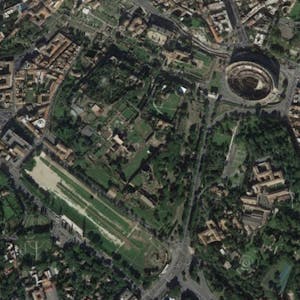Delve into the captivating course, "The Changing Landscape of Ancient Rome: Archaeology and History of the Palatine Hill," offered by Sapienza University of Rome. This comprehensive exploration of ancient urban landscapes encompasses the meticulous reconstruction of historical cityscapes throughout various periods. The course invites students to unravel the fragmentary evidence of archaeological findings, piecing together the physical and cultural evolution of the Palatine Hill in Rome.
Throughout this engaging journey, participants will gain insight into the multidimensional approach of classical archaeology, analyzing artifacts, structures, and landscapes to reconstruct the rich history of this iconic site. From the pre-urban epochs to the grandeur of the Roman Empire, each module unveils a distinct chapter in the evolution of the Palatine Hill, offering a profound understanding of its profound influence on the ancient Mediterranean world.
Certificate Available ✔
Get Started / More Info
Embark on a comprehensive journey through 8 modules, each delving into a distinct period of the Palatine Hill's history. From the pre-urban epochs to the grandeur of the Roman Empire, explore the evolution and significance of this iconic site.
Module 1: From ruins to a full evidence local history (methods, procedures, tools)
Module 2: From a border land to the largest settlement in Latium (13th–9th cent. b.c.e.)
Module 3: A city - ruled by kings - is born (8th – 7th century b.c.e.)
Module 4: New kings before a new State (6th – 3rd century b.c.e.)
Module 5: The Masters of an Empire (2nd - end of 1st century b.c.e.)
Module 6: The Capital of the Empire (end of 1st century b.c.e. – beginning of 1st century c.e.)
Module 7: The Golden City (1st – 2nd century c.e.)
Module 8: The Golden City and her decline (3rd – 6th century c.e.)
This course delves into the intersection of sports and activism in American culture, exploring the historical and contemporary impact of athletes and institutions...
I. Missões jesuíticas nos territórios guaranis: história
This course delves into the development of "the modern" and the transition to the postmodern era, exploring cultural change and evaluating the relevance...
El águila, el nopal y ¿la serpiente? is a captivating course that delves into the critical examination of symbols associated with the foundation of Tenochtitlan....